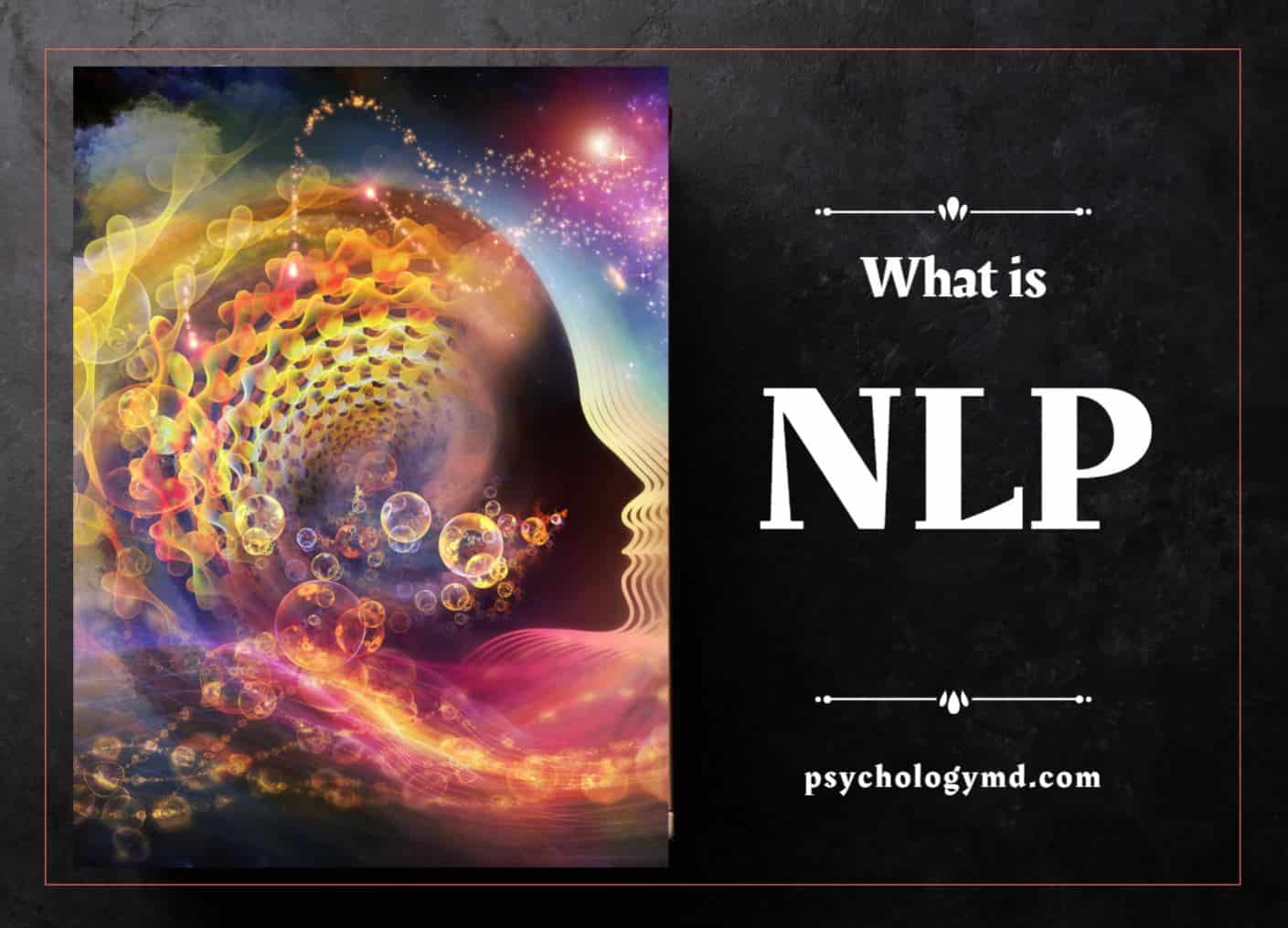Table of Contents
What is Neurolinguistic Programming (NLP)?

By understanding what is NLP, you will begin to notice how you think, what words you often use in your internal and external dialogue and how it affects your behavior.
Neurolinguistic Programming or NLP is based on the idea that our thoughts are affected by our language and physiology. NLP aims to change people’s thoughts and behaviors by changing their language patterns and body posture.
Neuro Linguistic Programming (NLP) is a powerful tool that can be used to improve your life and personal development and the lives of others around you in many ways. Neuro Linguistic Programming can be used to help you achieve your goals and overcome limiting beliefs and behaviors!
Neuro Linguistic Programming seeks to create or re-wire the connection between neurological processes (“neuro”), language (“linguistic”), and behavioral patterns learned through experience (“programming”) which can be accessed and reframed to achieve specific goals in life.
By learning the key elements and techniques from nlp models, you can learn how to allocate your time efficiently for information gathering, reframing, and rewiring your thought process, so you can create the life you want and enjoy the results you get.
Neuro Linguistic programming techniques can be customised to improve your relationships, non verbal communication and connect better with other human beings.
History and Origins of Neuro-linguistic Programming (NLP):
In 1972, Richard Bandler, a mathematics student and linguistics professor John Grinder at The University Of California, informally researched the work of Fritz Perls. Perls is the founder of Gestalt therapy. Fritz Perls worked with Virginia Star, who was a family therapist. The two claimed to follow dramatically different methods but surprisingly did pretty much the same within their client sessions.
Bandler and Grinder, the student and professor duo, studied the language patterns of these questions produced by Perls and Star. From that, they curated a model. Neuro Linguistic Programming techniques were started at the University of California, Santa Cruz. It was created in the 1970s and has grown tremendously over the years.
Neurolinguistic Programming is different from psychology because the very core of it is circulated in the study of something called “modeling.”
They were interested in what made people successful individuals and began studying people who were particularly good at what they did. They noticed that these people had certain patterns in their language and physiology that contributed to their success. NLP is considered a “soft science” because it is based on observations and not rigorous scientific studies.
Grinder and Bandler published their first book on NLP, Structure of Magic: A Book about Language of Therapy, in 1975. This book outlined the basic concepts of Neuro Linguistic Programming and discussed how to use language to change people’s thoughts and behaviors. The book was a bestseller and helped to popularize NLP around the world!
Grinder and Bandler’s work resulted in the development of the NLP meta model, a technique they believed could be used to identify language patterns that reflected basic cognitive processes. Neuro linguistic programming has been used in fields such as education, business, psychology, and even medicine.
NLP has been shown to be effective in helping people overcome mental health outcomes caused by anxiety, depression, phobias, and eating disorders.
Where does Neurolinguistic Programming draw its influences from?
Where does NLP draw its influences from? A number of pioneering works in psychology influenced NLP as mentioned earlier. Some of the noteworthy psychologists that NLP draws its influences from include:
Richard Bandler: He was one of the founders of NLP. He was interested in what made people successful and began studying people who were particularly good at what they did. He noticed that these people had certain patterns in their language and physiology that contributed to their success.
John Grinder: He was also one of the founders of NLP. He collaborated with Richard Bandler to study the patterns that contributed to success. Grinder also developed the Meta Model, which is still used in NLP.
Inspiration for Neuro Linguistic Programming:
NLP researchers initially focused on studying therapists who seemingly had miraculous results with their patients. There therapists were:
Virginia Satir: She was a therapist who developed family therapy. She believed that family dynamics could be used to help people change their thoughts and behaviors. Instead of just one person, she focused on the entire family as a whole unit. Virginia Satir believed if there’s dysregulation within one member of a household, it may stem from a familial disruption. Her findings were that they would return to their dysregulated family dynamic if she focused solely on a single person. All previous work done would regress to where it initially began. Satir’s techniques were also incorporated into NLP, and they continue to be used today!
Fritz Perls: He was a psychotherapist who developed the “be-here-now” Gestalt therapy. He was notoriously known and respected as knowledgeable about reading body language and seeing immediate changes. He is known for taking a unique approach to the standard psychoanalysis that typically takes several years to see a dramatic change in one’s understanding of who they are. He believed that people could change their thoughts and behaviors by understanding their thoughts and feelings.
Milton Erickson: He was a psychiatrist who developed hypnotherapy. He was highly respected as a genius with a different approach than most of his peers. He was one of the first people to study the use of language in influencing behavior. Erickson’s techniques were incorporated into NLP, and Bandler and Grinder used his work as a foundation for their own theories.
Other influences include:
- Noam Chomsky: A linguist who developed the theory of generative grammar. He believed that humans have an innate ability to create language.
- Gregory Bateson: A communication theorist who developed the concept of cybernetics. He believed that communication was essential to understanding the world around us.
- Carlos Castaneda: An anthropologist who wrote about his experiences with shamanism. He believed that the power of the mind could be used to change the world around us.
- Alfred Korzybski: A philosopher who developed the theory of general semantics. He believed that language could be used to create a model of reality.
How Does Neuro Linguistic Programming Work?
NLP techniques teach people new ways of thinking and behaving. The aim of the NLP therapist is to help people overcome challenges in their lives so that they can achieve their desired outcomes.
NLP works by changing your thoughts and behaviors through changing your language patterns and body posture. When you change your language, you change your thoughts. When you change your thoughts, you change your behavior. When you change your behavior, you change your life!
To do this, NLP therapists and practitioners use a variety of techniques, including:
- Modeling: This involves studying the behavior of successful people in order to learn from them and replicate their success.
- Anchoring: This involves linking positive emotions (e.g., happiness, confidence) to certain cues (e.g., a particular word or phrase) so that you can access those emotions when you need them.
- Reframing: This involves changing the way you view a situation so that it is more positive and helpful.
- Goal setting: This involves setting clear, achievable goals so that you have something to strive for.
- Visualization techniques: This involves using your imagination to picture yourself achieving your goals.
- Communication techniques: This includes using body language, preferred representational systems, and other aspects to communicate with the unconscious mind and improve relationships.
What are the Applications of Neuro-linguistic Programming in daily life?

- Improving communication skills
- Persuasion and influence
- Achieving your goals
- Overcoming fears and phobias
- Sales and marketing
- Negotiation
- Conflict resolution
- Stress management
- Eliminating bad habits
What benefits should I expect from learning Neuro Linguistic Programming?

Some of the benefits you can expect from learning NLP include:
- A greater understanding of yourself and others
- Become an effective communicator
- The ability to set and achieve your goals
- Improved relationships through better communication
- Better stress management
- Eliminate of bad habits
Mental health professionals use NLP by itself or with other types of therapy, like talk therapy or psychoanalysis, to help treat a variety of mental health conditions. Conditions that NLP has been shown to be particularly effective in treating depression and anxiety.
If you’re interested in learning more about NLP, there are a number of resources available, including books, courses, 1-1 online training, and workshops. You can also find a number of free resources and 1-1 training on this website.
The basic concepts of NLP are what are called the “Pillars”
There are three Pillars:
- Communication
- Behavior
- Mindset
These pillars are what NLP is built on and what makes it such a powerful tool for change. Let’s take a closer look at each one.
- Communication: NLP helps you better observe and understand how we communicate with ourselves and others. We do this through our language, both verbal and nonverbal. Our language patterns reveal our thoughts and beliefs, which influence our behavior. By changing our language, we can change our thoughts and beliefs, which will ultimately change our behavior.
- Behavior: Our behavior is a result of our thoughts and beliefs. If we want to change our behavior, we need to change our thoughts and beliefs. NLP provides the tools and techniques to help us do just that.
- Mindset: Our mindset is what drives our thoughts and beliefs. It’s what determines how we see the world and how we react to what’s happening around us. NLP helps us to change our mindset, which in turn changes our thoughts and beliefs, and ultimately our behavior. NLP is a powerful tool that can help you achieve your goals, overcome your fears, and eliminate your bad habits.
Is Neuro Linguistic Programming legit?
Concerns and Limitations of Neuro-Linguistic Programming
Yes, NLP is considered a legitimate field by many renowned coaches and experts. Numerous unsolicited testimonials from clients confirm the effectiveness of the approach.
However, there are some concerns and limitations to be aware of.
Some of the concerns include:-
- The lack of empirical evidence to support the claims made by NLP practitioners
- The potential for abuse, manipulation, and exploitation by unscrupulous individuals
- Improper understanding of concepts and language by rookie trainers
Research on NLP
The research findings on neurolinguistic programming (NLP) are mixed, but there is some general practice evidence that NLP models can be used to improve clinical psychology outcomes. In particular, neurolinguistic psychotherapy has been found to be effective for a range of mental health issues. However, more research is needed on the effectiveness of NLP interventions in general.
Systematic reviews are a type of literature review that uses a rigorous, systematic approach to identify, appraise, and synthesize all the research on a particular topic.
A systematic review of the research on NLP therapy found that it is an effective intervention for a range of mental health issues. The review also found that NLP is more effective than no treatment and has comparable effectiveness to other psychological treatments. However, more research is needed on the effectiveness of NLP interventions in general.
References
NLP has been the subject of much research over the years. Some of the studies have found positive results, while others have found mixed or no results. Overall, the research on NLP is inconclusive and needs more investment into research.
Despite these concerns, there are many experts who believe that NLP is a valuable tool that can be used to help people achieve their goals. The best judge of the truth are the results you get. If NLP brings you new insights and helps you perform and communicate better, the other debates and controversies really don’t matter!
Is neurolinguistic programming ethical?
To ensure that NLP is used ethically, it’s important to only work with qualified and experienced practitioners. A good NLP therapist or practitioner will always adhere to the principles of NLP and use the techniques for good. They will also be transparent about what they’re doing and will get your consent.
If you’re considering using NLP, make sure you do your research and only work with someone you trust.
The NLP techniques you learn should not be used to manipulate or exploit others. There have been some concerns raised about the potential for abuse by unscrupulous individuals. For example, a salesperson could use NLP techniques to trick someone into buying a product they don’t need.
By learning NLP you will be able to spot if someone is using manipulative techniques on you.
What are some examples of Neuro-linguistic programming (NLP) Techniques:
- Anchoring: This is a technique that helps you to associate a positive emotion with a physical sensation. For example, if you want to feel more confident, you would anchor the feeling of confidence to a physical sensation, such as the feeling of your feet on the ground or the sound of your voice.
- Reframing: This is a technique that helps you to change the way you think about a situation. For example, if you’re thinking about a goal and you keep getting distracted, you can reframe your goal as something that’s more important than distractions.
- Swish Pattern: This is a technique that helps you to change a negative thought or behavior into a positive one. For example, if you’re afraid of public speaking, you can use the swish pattern to change your fear into excitement.
There are many more techniques that can help you in various areas of life.
References and recommended reading: Your NLP Research Data base:
- Bandler, R., & Grinder, J. (1975). The Structure of Magic: A Book About Language and Therapy, Volume 1 . Palo Alto, CA: Science and Behavior Books.
- Bandler, R., & Grinder, J. (1975). The Structure of Magic II: A Book About Communication and Change . Palo Alto, CA: Science and Behavior Books.
- Patterns of the Hypnotic Techniques of Milton H. Erickson: Volume 2 (1st ed.). Meta Publications. pp. 11–19. ISBN 978-1-55552-053-3
- Druckman, Daniel; John A. Swets (1988). “Enhancing human performance: Issues, theories, and techniques”. Human Resource Development Quarterly . 1 (2): 202–06. doi : 10.1002/hrdq.3920010212 .
- Canadian Agency for Drugs and Technologies in Health. (2014, November 3). Neuro-linguistic programming for the treatment of adults with post-traumatic stress disorder, general anxiety disorder, or depression: A review of clinical effectiveness and guidelines : http://www.ncbi.nlm.nih.gov/pubmed
- Hall, L. Michael; Belnap, Barbara P. (2000) [1999]. The Sourcebook of Magic
- Neuro-linguistic programming: Cargo cult psychology? Journal of Applied Research in Higher Education , 1 (2), 57–63 https://www.researchgate.net/publication/242770183_Neuro-linguistic_programming_cargo_cult_psychology Stipancic, M., Renner, W., Schütz, P., & Dond, R. (2010, March).
- Bandler, Richard (1993). Time for a Change . Meta Pubns. p. vii. ISBN 978-0-916990-28-2
- Neurolinguistic Psychotherapy and Counseling Association (UK) Wake L and Leighton M. Pilot study using neurolinguistic programming in post-combat PTSD. Mental Health Review Journal. 2014;19(4):251-264.







0 Comments